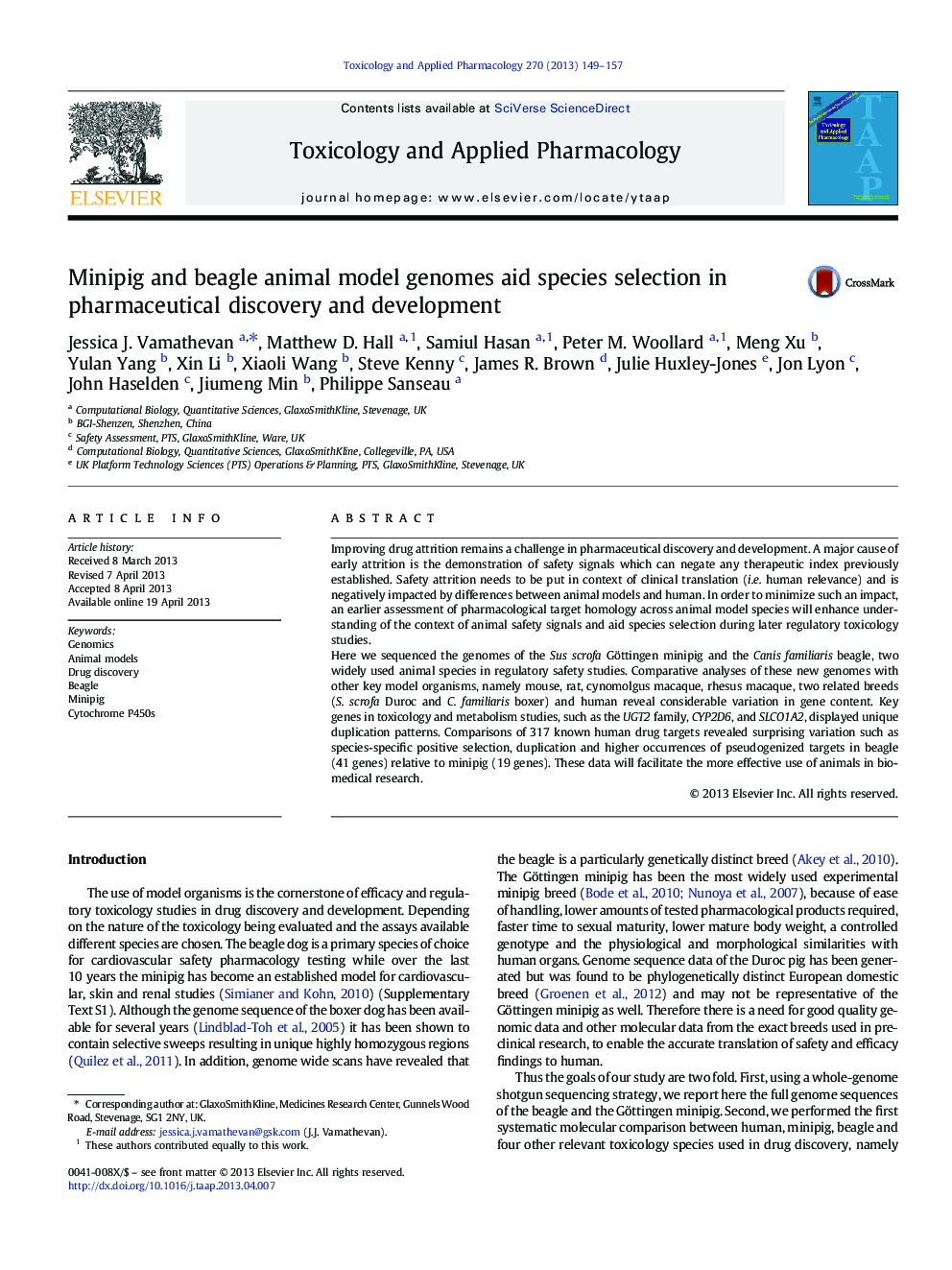| کد مقاله | کد نشریه | سال انتشار | مقاله انگلیسی | نسخه تمام متن |
|---|---|---|---|---|
| 2568745 | 1128480 | 2013 | 9 صفحه PDF | دانلود رایگان |

• Genomes of the minipig and beagle dog, two species used in pharmaceutical studies.
• First systematic comparative genome analysis of human and six experimental animals.
• Key drug toxicology genes display unique duplication patterns across species.
• Comparison of 317 drug targets show species-specific evolutionary patterns.
Improving drug attrition remains a challenge in pharmaceutical discovery and development. A major cause of early attrition is the demonstration of safety signals which can negate any therapeutic index previously established. Safety attrition needs to be put in context of clinical translation (i.e. human relevance) and is negatively impacted by differences between animal models and human. In order to minimize such an impact, an earlier assessment of pharmacological target homology across animal model species will enhance understanding of the context of animal safety signals and aid species selection during later regulatory toxicology studies.Here we sequenced the genomes of the Sus scrofa Göttingen minipig and the Canis familiaris beagle, two widely used animal species in regulatory safety studies. Comparative analyses of these new genomes with other key model organisms, namely mouse, rat, cynomolgus macaque, rhesus macaque, two related breeds (S. scrofa Duroc and C. familiaris boxer) and human reveal considerable variation in gene content. Key genes in toxicology and metabolism studies, such as the UGT2 family, CYP2D6, and SLCO1A2, displayed unique duplication patterns. Comparisons of 317 known human drug targets revealed surprising variation such as species-specific positive selection, duplication and higher occurrences of pseudogenized targets in beagle (41 genes) relative to minipig (19 genes). These data will facilitate the more effective use of animals in biomedical research.
Journal: Toxicology and Applied Pharmacology - Volume 270, Issue 2, 15 July 2013, Pages 149–157